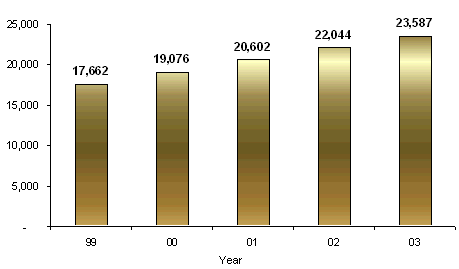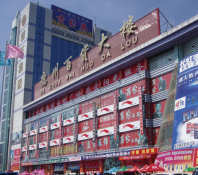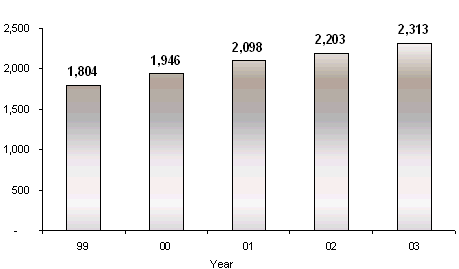Changing Jewelry Distribution
March 31, 07
By Ken Gassman
 |
Demand trend changes in the Chinese market have changed the way jewelry is sold. Traditionally, jewelry has been sold through well-established Chinese retail groups, which concentrated on the quality and weight of the metal and stones as a selling feature, rather than promoting jewelry design or style. Small, high-grade diamonds set in yellow gold, usually in a solitaire ring, have been the staple of the Chinese jewelry trade - until now.
In rural China, the old purchasing pattern persists. In the major cities, however, jewelry is increasingly sold through department stores that promote design and style.
An increase in consumer spending on discretionary items, including jewelry, has spurred a rapid increase in the number of jewelry stores in the country. New jewelry stores, are opening so rapidly in China that demand is not keeping up with supply. At some point, demand will catch up with supply, and the jewelry industry will continue to expand at a rapid pace.
| Number of Jewelry Outlets – China |
Brands Are Important To Chinese Consumers
Brand development in China’s jewelry industry is lagging. Branding is still in its early stages. While international brands are well known in China, local brand recognition is still in its infancy.
Because jewelry has historically been sold by weight (still the standard today), it has been difficult to convince consumers of the value of branded fine jewelry, which sells for far more than the weight of its gold, diamonds, or other components.
As a result of this mentality, China is still in the early stages of developing consumer brands. Several luxury labels have opened stores in the country, including Richemont, Cartier, Montblanc, Piaget, Dunhill, and Luis Vuitton. Tiffany has boutiques in China, which management says are highly successful. Management at watchmaker Movado says that the market for luxury watches in China is developing rapidly and will be important to the company’s future growth.
|
|
Many international high-end brands are entering the mainland Chinese market by leveraging retail platforms established in Hong Kong. Luxury brand producers view Hong Kong as a showcase market for raising brand awareness and product knowledge among affluent mainland Chinese visitors.
A recent study estimated that mainland Chinese tourists represent as much as 60 percent of retail sales in Hong Kong, where prices are 20 to 40 percent lower than those in mainland stores. Giorgio Armani, Bulgari, Louis Vuitton, Christian Dior, Hermes, and others all have flagship stores in Hong Kong.
The lack of world-class Chinese brands produced in China has led to low prices for jewelry. Further, because the jewelry industry is so highly fragmented at the manufacturing level, no producer is large enough to have either the pricing power or the ability to create a recognizable domestic brand, much less a global one.
In 2005, the Chamber of Commerce of the Jewelry and Precious Metals Industry of the All-China Federation of Industry & Commerce launched a series of branding projects for jewelry among its members. These programs included “Famous Gold, Gem & Jewelry Brands in China”, “Model Gold, Gem & Jewelry Shops in China,” “China Jewelry Brands,” and “Special Gold, Gem & Jewelry Bases in China.” The Chamber of Commerce reports that there are currently more than 20 Chinese jewelry brands that are recognized as “Chinese Famous Brands” as well as “Well-Known Brands in China,” according to their research.
Some of the key brands in China are imports from Hong Kong and Taiwan that have reoriented their businesses to meet the needs of mainland Chinese consumers. Four Hong Kong jewelers are ranked among the top ten diamond brands in China. According to the trade magazine Gold Jewelry, those four Hong Kong jewelers with a high level of recognition in mainland China include Chow Tai Fook, Tse Sui Luen (TSL) Jewelry, Chow San San, and Luk Fook Holdings.
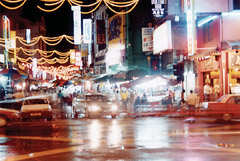 |
Two Important Cities: Shanghai and Beijing
Shanghai is the fashion capital of China, and its consumer purchasing trends set the standard for the rest of the country. As a result, Shanghai is the typical entry point for jewelry producers and retailers who are targeting the Chinese mainland market.
In Shanghai, the richest city in China, a large portion of its population has adopted an extravagant lifestyle; having a significant impact on the city’s demographic and consumer demand trends. The number of shopping malls in Shanghai is expected to double in the next few years. Western designer brands are being sold in the city’s stores, which are freguented more and more with men in Hugo Boss suits and women wearing Prada skirts.
Because of the size of Shanghai’s jewelry market, the National Gemstone Testing Center, China’s top jewelry grading and examination body, is helping to boost the integrity of the jewelry business in the city with a laboratory. The 1,000-square-meter lab provides jewelers and consumers with an official service to settle disputes over the quality of jewelry products.
The offices of international jewelry organizations such as The World Gold Council, the DTC Diamond Promotion Center, the International PT Association, and the Tahiti Pearl International Promotion Center, are also located in the city.
The Shanghai Diamond Exchange and the Shanghai Gold Exchange were founded in 2000 and 2002 respectively.
Major jewelry retailers in Shanghai include Laofengxiang, Laomiao, Chenghuang, and Yuyuan. Hong Kong brands with stores in the city include Chow Tai Fook, Ttse Sui Luen, J’s, and Luk Fook. International brands sold include Cartier, Bulgari, Tiffany, and others.
The second most-important city for jewelers intent on entering the Chinese market, is Beijing. Many government officials working here have become wealthy and shopping centers abound.
Jewelry retailers have opened stores adjacent to other jewelry production centers. Guangzhou is a jewelry retail market in the Guangdong province. It is now one of the largest and most mature retail markets with more than 170 jewelry shops, located in the main shopping districts on Beijing Road, Shangxiajiu Road, and in the Tianhe district. The city’s Liwang Plaza is expected to be developed into a “Crystal City” where more jewelry shops will open.
Shenzhen, Panyu, and Huadu - all of which are major jewelry processing centers - also have a major retail concentration of jewelry stores.
Hong Kong: Capitalist City
Hong Kong is a bastion of capitalism with haves and have-nots. Jewelry market is growing rapidly, posting a consistent 20 percent annual growth rate. Jewelry sales in Hong Kong currently exceed an estimated $3 billion.
| Number of Jewelry Outlets – Hong Kong |
Hong Kong’s jewelry sales growth is being fueled by three factors:
w Local consumers are buying for themselves
w Foreign visitors, especially from other Asian countries
w Visitors from mainland China
IDEX Online Research estimates that spending by tourists from mainland China represents as much as 60 percent of luxury goods sales in Hong Kong. These tourists often make major luxury goods purchases while in Hong Kong because prices are 20 to 40 percent lower than at home. Mainland Chinese tourists tend to purchase luxury goods that are easily identifiable from afar. Jewelry isn’t as easily recognizable as a Louis Vuitton purse or a Hermes scarf. Thus, the jewelry sales mix to motherland Chinese consumers is lower than for other types of luxury goods.
The retail channel in Hong Kong is made up of more than 700 jewelry retailers, including a mix of local merchants and internationally renowned jewelers such as Tiffany & Co., Van Cleef & Arpels, Mikimoto, Cartier, and others. Local specialty jewelry stores and chain stores include Chow Sang Sang, Chow Tai Fook, Tse Sui Luen, Luk Fook, Emperor Jewellery, Larry’s Ma Belle, Just Gold, Just Diamonds, as well as department stores.
Like its counterparts in mainland China, Hong Kong’s sales per jewelry store have slipped as merchants have tried to grab market share. At some point, demand and supply will re-balance, and sales per store will rise.
One Hong Kong company cited as particularly adept at tapping the growing affluence of mainland Chinese consumers, is Hang Fung Jewelry Co. Ltd.Chinese tourists account for more than 90 percent of this retailer’s sales. According to the company, when tourism surges during the Chinese New Year (late January to early February), Hang Fung says that more than 10,000 tourists visit the company’s showrooms in Hong Kong each day, more than five times the number of daily visitors in non-holiday periods. Chinese mainland shoppers spend an average of about $320 each in Hang Fung, the highest among all nationalities who visit this jewelry merchant. While the company is known for its 24 karat gold jewelry, most of its Chinese patrons purchase 18 karat white gold or diamonds set in platinum.
Although the market came to a virtual standstill from March to June in 2003 during the SARS outbreak, it staged a dramatic rebound when Hong Kong was taken off a list of infected regions. Consumers are resilient wherever you go.
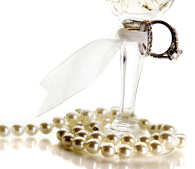 |
Hong Kong is a cosmopolitan city with a large upper and upper middle class. Hong Kong consumers have a strong flair for fashion, and many luxury industry merchants believe Hong Kong sets fashion trends across Asia.
In addition to high-quality diamonds and diamond jewelry, shoppers want jewelry with modern, avant-garde designs reflective of clothing trends. They prefer settings of white gold, platinum, and steel – the “white look.”
Native American turquoise jewelry, jewelry set with crystals, and semi-precious and precious gemstones are also popular.
w GIA-Certified diamonds
w Diamonds under one carat
w Diamond jewelry with “modern designs’’
w Steel and white metal jewelry with modern avant-garde designs, with or without gems, diamonds, or crystals
w Native-American turquoise jewelry to match prairie blouses and denim pants
w Jewelry in white metal set with semi-precious stones and colored crystals at lower price points
w Fashion watches
w Branded watches
w Stainless steel watches
w Multi-function watches
Hong Kong Jewelry Is Mostly Imported
Based on value, about 93 percent of all jewelry sold in Hong Kong is imported, with primary suppliers including India (30 percent market share), Israel (12 percent), Belgium (11 percent), the U.S. (11 percent), and China (9 percent). Jewelry is also imported from Italy, Indonesia, and Myanmar.
